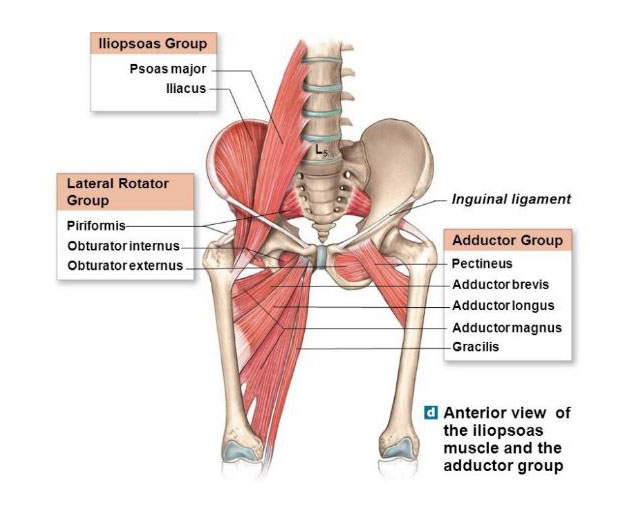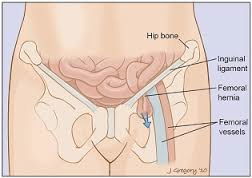Hernia
Causes of Groin Pain
Many cases of groin pain are seen in clinic, some because of trauma, others from no obvious cause. To make a diagnosis an evaluation is made of the muscle groups shown below to determine any tears, trigger and tension points or functional disorders.
To identify the problem, imaging of the pelvis, hip and muscle may be required.
Potential Causes Of Groin Pain
There are many different potential causes of groin pain.
Structures in the pelvis and stomach may cause groin pain, although for women, a genealogical cause is possible and must be identified or excluded. Disruption of spinal segments may also cause groin pain.

Femoral Hernias
Femoral hernias, are groin hernias and cause groin pain. They are common in women but can occur in men. These hernias appear just below the groin crease and are usually the result of pregnancy and childbirth. Weakness of tissue structure allows an intestinal sac to drop into the femoral canal, a space near the femoral vein that carries blood from the leg.
These hernias are more prone than inguinal hernias to develop incarceration or strangulation as an early complication.
Early repair of these hernias is essential to prevent more severe complications. The use of imaging with MRI or Ultrasound (as appropriate) will clearly show the hernia and defects in the abdominal wall.
Inguinal Hernias
Inguinal hernias are the most common type of hernia. They represent approximately two thirds of adult hernias and are much more common in men than in women. They occur in a part of the abdominal wall known as the inguinal canal, where a man's testicles must descend before birth. This leaves a natural defect called the internal inguinal ring that can develop into a hernia if it doesn't seal properly.
As a result, the contents of the abdomen, such as intestine, may protrude through the opening, creating pain and/or a bulge. These hernias can exist but not cause symptoms immediately, with a trauma or minor event triggering symptoms.
Hernias may be seen on MRI scanning for pelvic or hip pathology that have not been previously diagnosed due to there being no symptoms.
Inguinal hernias are located in the lower abdomen just above the leg crease, near or adjacent to the pubic area.
They can sometimes occur on both sides of the pubic area, and if they do, they are called bilateral inguinal hernias. Inguinal hernias, along with femoral hernias make up the 2 types of groin hernias and can produce pain that extends into the upper thigh or scrotum.
An indirect inguinal hernia occurs through the natural weakness in the internal inguinal ring. A direct inguinal hernia is a result of weakness in the floor of the inguinal canal and is more likely to develop in older men over the age of 40.
The floor of the inguinal canal is located just below the internal inguinal ring. A surgical technique of tension free repair is less prone to recurrence of the hernia defect.

Location of Inguinal Hernia in the groin from Magnetic Resonance Imaging

Location of Inguinal and Femoral hernia in the groin
Consultations and Treatment from £95*
Appointments
07850 699534
*More complicated conditions may require
longer consultations and additional cost